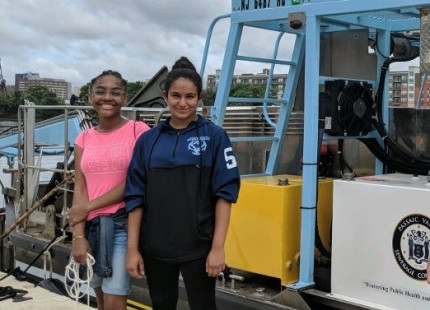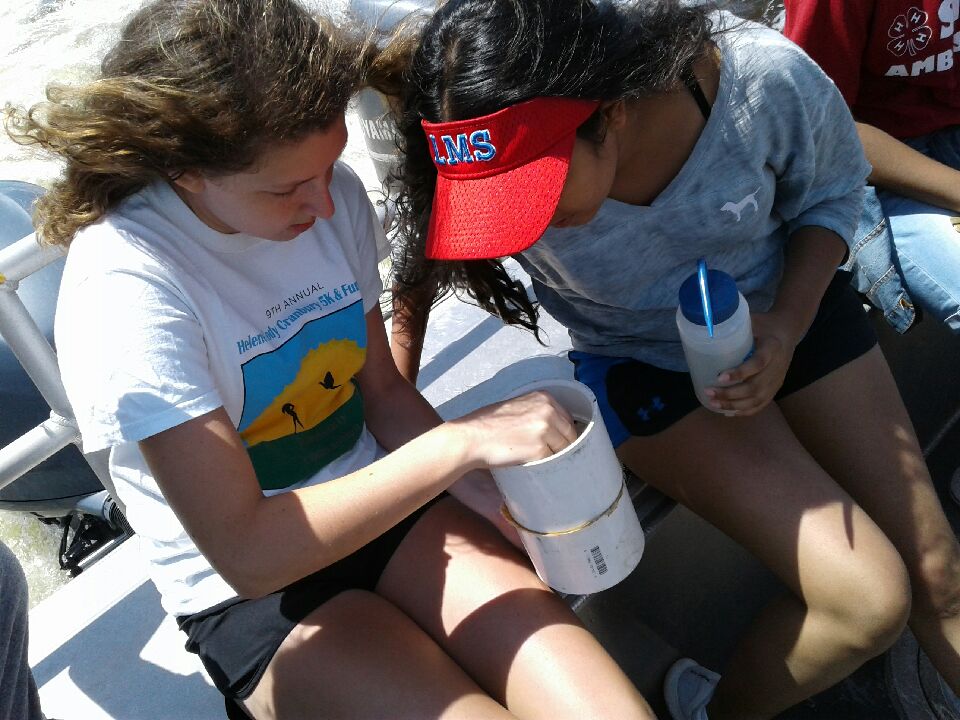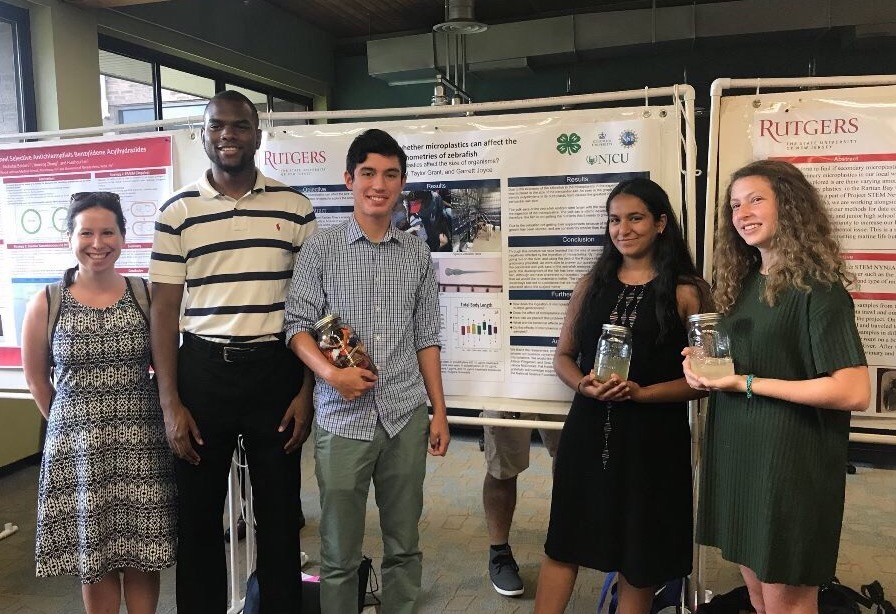They May Be Micro, But These Plastics Have a Big Impact
Riya Goel, Youth Activist
|September 27, 2018

Riya Goel, Youth Microplastics Researcher with Fellow Researcher
Microplastics. Seems like a daunting word. But really, it’s simple, and it explains a bigger problem. One that has been created by us humans. Microplastics are essentially plastics, in a range of sizes from one millimeter to one nanometer. Some of these plastics are so small, you can’t even see them with your naked eye. Plastics can be found in practically everything we use nowadays. It is virtually impossible to go a day without using plastic. As plastic products vary in size, bigger plastics, or macro plastics can break down into microplastics. Plastics also aren’t just made of traditional petroleum, but also have additives called plasticizers. These chemicals are not chemically bonded to the plastic, and form almost a cage-like structure around the plastic. When plastics with these plasticizers end up in our waterways and are broken down by the sunlight, the cage around the plastic breaks, releasing these harmful chemicals into our water as well.
STEM: These four letters offer more jobs and opportunities than meets the eye.
I am Riya Goel, a sophomore at West Orange High School in West Orange, New Jersey. The environment has always been a huge part of who I am, and has shaped my thinking over the years. Growing up vegetarian, in New Jersey, and taking the occasional trip to my parent’s native country of India have all contributed to my outlook on life. Just living in the state of New Jersey has exposed me to so many environmental problems. Taking the trips to India has allowed me to see how that country is approaching similar problems as it develops that are often of a much larger scale than here. With all of these experiences, it only makes sense for me to do something about it.
I got involved with 4H (the organization I got this research opportunity through) during eighth grade. I was thrilled that I could help others become more sustainable and environmentally friendly. 4H doesn’t only deal with the environment. It also promotes youth leadership and volunteering. I worked with the local 4H group in my county for eighth grade and freshman year of high school, and was invited to attend a STEM Ambassadors Camp this summer at Rutgers University. Although I went into camp a little skeptical of what I was going to learn, the week I spent there was priceless. This camp was on Rutgers New Brunswick campus, and not only did I get to stay in college dorms, but I got to eat the food (which was amazing), and even swim at the athletic center.
Most of all, this opportunity has taught me that we can’t move forward before we fix today.
But it was the STEM activities that really defined my time there. We listened to guest speakers to really understand what certain fields in STEM really are. These four letters offer more jobs and opportunities than meets the eye. On our third day of camp, we got a whole research day with one of four groups. I happened to be in the microplastics group. On our research day, I got to meet the remarkable people I would be working with over the next four weeks. We went to our field site at the Raritan River to sample the water and sediment. We suited up with boots that came to our thighs, and waded into the water with two pieces of equipment. One was a core, a cylindrical object that you dig into the bottom of the body of water to get the layers of sediment over time. The other piece of equipment was a sieve, a set of filters that separated the core sample by size. The last part of the sieve was a filter measuring 400 microns. With this sampling, we could find pieces of plastic that were very small. The team of researchers would then take this to their lab for further analysis.

After this exciting sampling session, we headed back to campus to create a scientific poster. Using the research already conducted by one of the graduate students that was working with us, Gina Moreno, we were able to see the negative effects of introducing plastic in our waterways. She was working with zebrafish and had set up an experiment with the embryos of these fish. Gina had two groups of embryos, one that was put in “microplastic” water, and the other in regular freshwater. After her analysis, she concluded that the overall body length of the fish exposed to the microplastics was much shorter, and that their pericardial sac was inflamed. The pericardial sac of the zebrafish is essentially a sac that contains the heart. When the area around the heart is inflamed, the heart is then compromised, and the fish isn’t able to function normally. Using this data, we made a scientific poster for camp, and later on during our research term.

For the next four weeks, I had the privilege of working with these researchers. We presented at an undergraduate symposium at Rutgers and Columbia University. I got to see the labs where the zebrafish were studied, do more samplings on the Raritan and Passaic Rivers, and take an online course that supplemented what we were doing. Sampling on two rivers was very beneficial, as it allowed everyone to see the different things in the water by area and the quantity of plastic or garbage that was in it. We found that the Passaic river that was flowing through Newark had a higher quantity of macro plastics compared to the Raritan. The online course that everyone in the group took included reading scientific papers, which was a new experience, as these reports are very term and text heavy. It also challenged us to think about this issue from multiple perspectives, and helped us to see all the things other people were doing to fix this problem, that we humans have caused.
Over the course of this research, I have truly learned the dedication and effort it takes to do research. It is no easy task. This research has sparked my interest in environmental issues and I am considering this as a career option in addition to biomedical engineering. Most of all, this opportunity has taught me that we can’t move forward before we fix today.
Want to read more? Check out the ACE Blog.
Join our Youth Action Network
More Blog Posts
Driving India towards self sufficiency and freedom from oil
India can shield itself from oil-price shocks and global pressure over Russian barrels by leaning harder into two strengths it …
Read More
Unnatural, Not Unprecedented
For two weeks, residents of Southern California endured a waking nightmare. Parents raced against time – hurrying down the driveway …
Read MoreCrafting a Vision for the Future: My Experience at LCOY USA 2024
Dry and sunny Tempe, Arizona where temperatures have been over 100 F for 113 consecutive days, delegates gathered to attend …
Read More